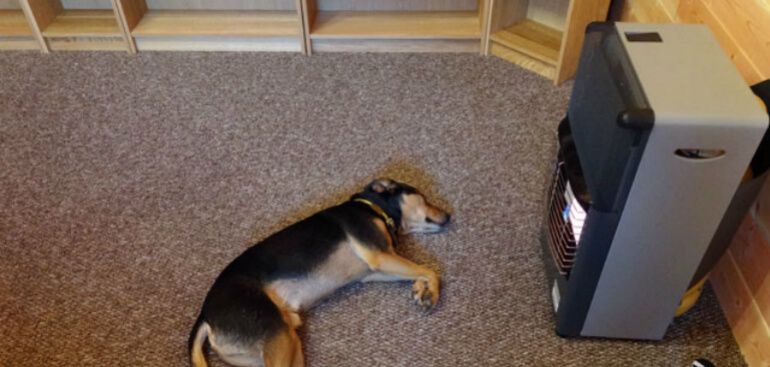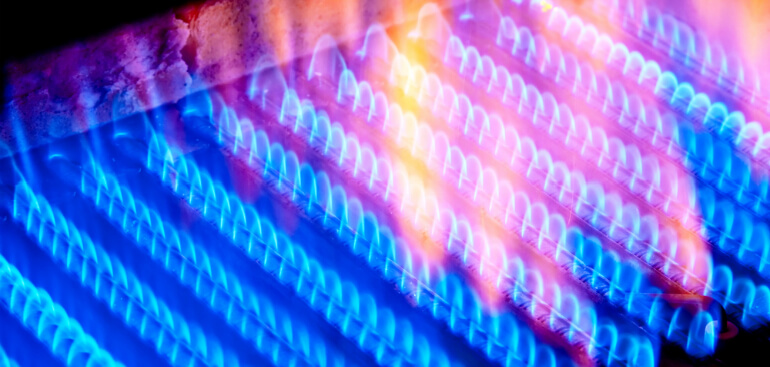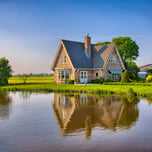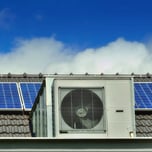
Get up to 4 quotes from our selected suppliers by filling in only 1 form

Save money by comparing quotes and choosing the most competitive offer

Our service is 100% free and with no obligation
- GreenMatch
- Blog
- Gas Heater: an Optimal Solution for Summer House Heating
Gas Heater: an Optimal Solution for Summer House Heating
What is a Gas Heater?
A gas heater delivers an ingenious and cost-efficient solution to home heating that can be used during the heating season as well as during the cold summer days. It would perfectly fit in a cottage or a summer house, and will cover most of the costs associated with the property’s heating. Most of the times, a cottage does not require a complex heating system to be installed. Sometimes it is enough and even more practical, to buy a good gas heater for the summer, especially since there are a number of options to choose from.
Gas heaters are usually classified as flued or non-flued heaters, which can run on natural gas, liquefied petroleum gas, propane or butane. To a certain extent, a gas heater resembles a conventional radiator, in that it looks similar externally and it is usually installed in the same place, under the window or mounted near the walls. The gas combustion takes place in a specially designed and isolated chamber within the heater itself. The air trapped between the combustion chamber and the heater’s outer cover is warmed up, due to which it rises and spreads throughout the room. The design of the heater allows for a rapid heating of the air, which makes it particularly handy in situations with an unstable central heating supply.
Flued Gas Heaters
The heater is quite convenient during exploitation, whereas it automatically maintains the given temperature - from 14 to 38 degrees Celsius. The heater’s external case does not reach temperatures over 60 degrees Celsius, which is rather safe for children and pets playing nearby. Upon reaching the desired temperature, the gas combustion intensity weakens and the heating capacity gradually decreases. If the flame disappears completely or the gas pressure drops to a critical level, the alarm system is triggered, which switches off the device.

Non-flued Gas Heaters
Non-flued gas heaters, also known as vent free heaters or flueless fires, usually incorporate a catalytic converter and can run either on gas or on gasoline. These heaters are suitable for heating various types of properties, from a hangar to an apartment, summer house or a garage, and are optimal for 20 square meters rooms. Additionally, the catalytic combustion, the process responsible for heat generation in non-flued gas heaters, sometimes called ‘surface burning’, is characterized by the absence of flame and noise.
In the case of non-flued heaters, it is paramount to follow the safety rules stipulated by the manufacturer, since the inappropriate use of the non-flued heater might pose certain risks. Therefore, it is advised to keep these heaters always clean, to ensure a proper ventilation around the device, and to make sure that the heater is switched off before going to bed. If the exploitation instructions prescribed by the manufacturer are followed precisely, then the heater will prove quite safe in exploitation, and the only emissions it will produce as a byproduct will be water vapour and carbon dioxide.
The convector’s heating element is made of fiberglass and it integrates a catalytic panel. Due to this, the combustion process is more efficient, and thus, produces more heat. The models that are currently available on the market use deep oxidation catalysts as their heating elements, which do not contain hazardous metals. In addition to this, there are models which incorporate a fan heater as well, which allows to significantly increase the heater’s capacity, up to 4.9 kW.

Pros of Non-flued Heaters
- Portable devices – these heaters can be easily moved from one room to another and be pointed in different directions.
- High efficiency rate – it converts about 90% of the consumed gas into heat.
- Instant heating – Come with a heating capacity of up to 25 MJ/h (megajoules per hour), which is equivalent to more than 6kW of electric heating.
- Relatively cheap - although the selling price is quite high, the exploitation is much cheaper, compared to conventional electric heaters.
- Low carbon emission - a non-flued heater typically produces 50 to 60% less carbon dioxide, compared to an electric heater.
- Improved safety - the newest models are equipped with the latest safety features that switch the heater off in case something goes wrong.
Cons of Non-flued Heaters
- Lack of a chimney - Without a chimney, the combustion by products are vented back into the room.
- Limited use - It is prohibited to place these heaters in bedrooms, bathrooms and other small rooms with limited ventilation capacity. Therefore, a flued heater would deliver a viable alternative, in this case.
- Carbon emissions - Although non-flued heaters produce relatively small quantities of carbon monoxide and nitrous oxides, they can still cause problems to people who suffer from respiratory issues and certain allergies, opting for a flued heater instead.
- Water vapours - The resulting water vapours, although harmless, can condense on walls and ceilings, causing mould growth.
Get Quotes Now!
To make sure you make the right choice when investing in an energy appliance such as a boiler, a solar panel or a heat pump, you can fill out the form on the top of this page providing us with information regarding your house and its location. We will make sure to contact you as soon as we receive your contact form and provide you with up to four different suppliers located close to your place. This service is of course free of charge and with no obligation.
Fill in the form in just 1 minute
We strive to connect our customers with the right product and supplier. Would you like to be part of GreenMatch?





